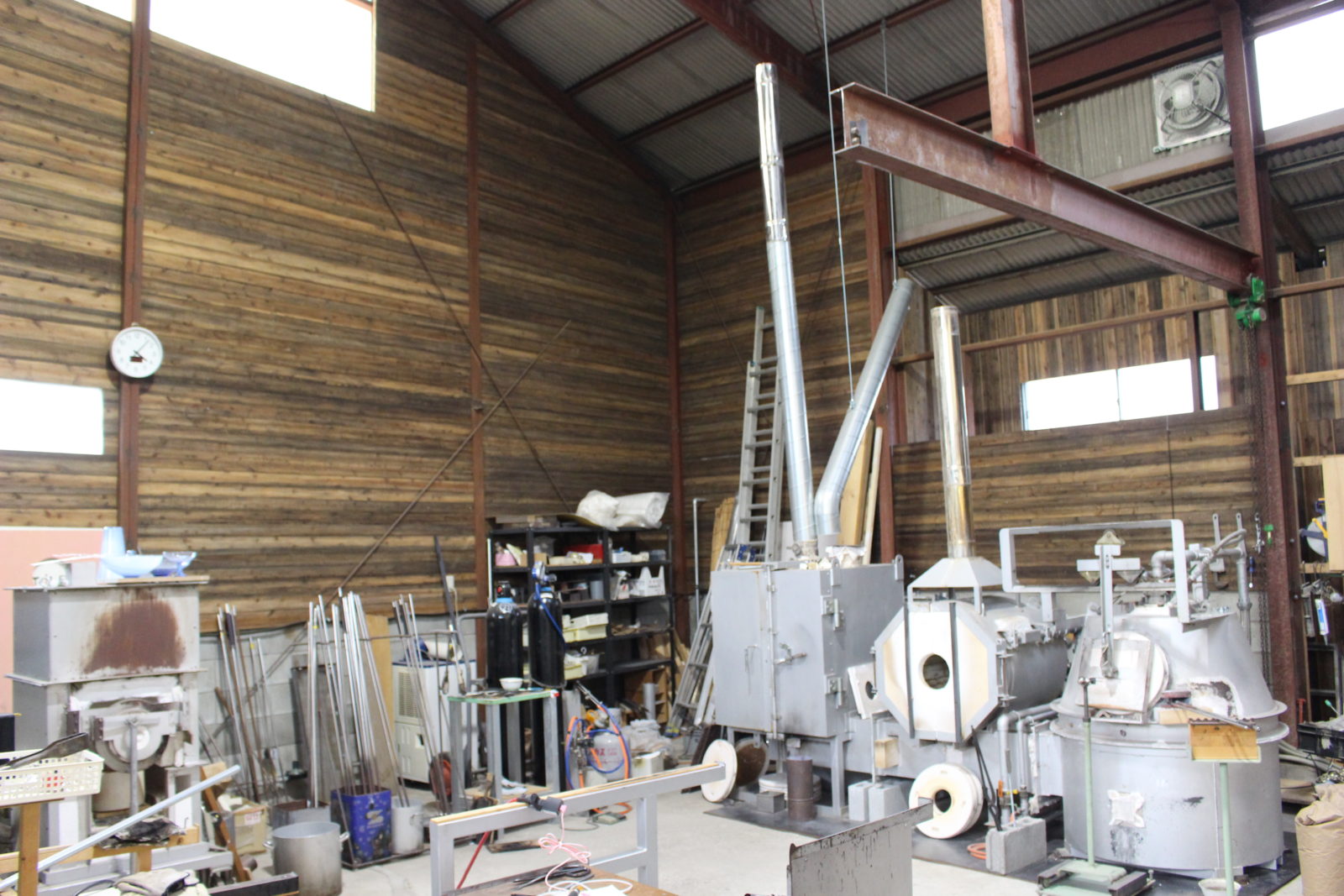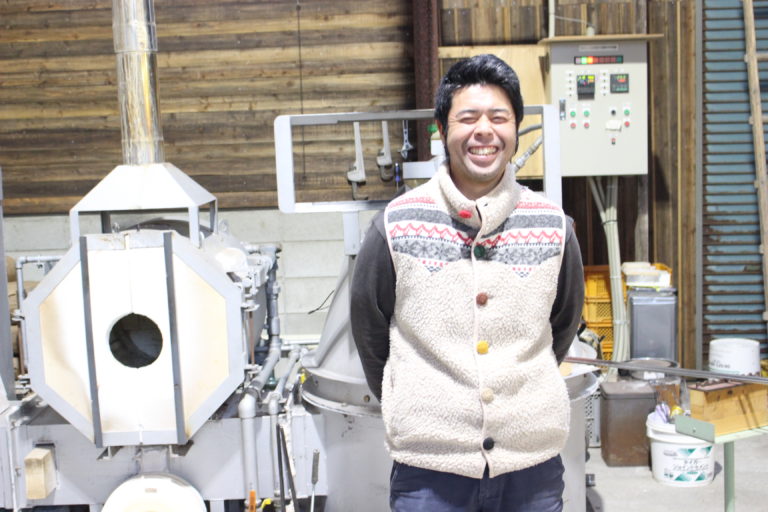How He Got Started in Glass
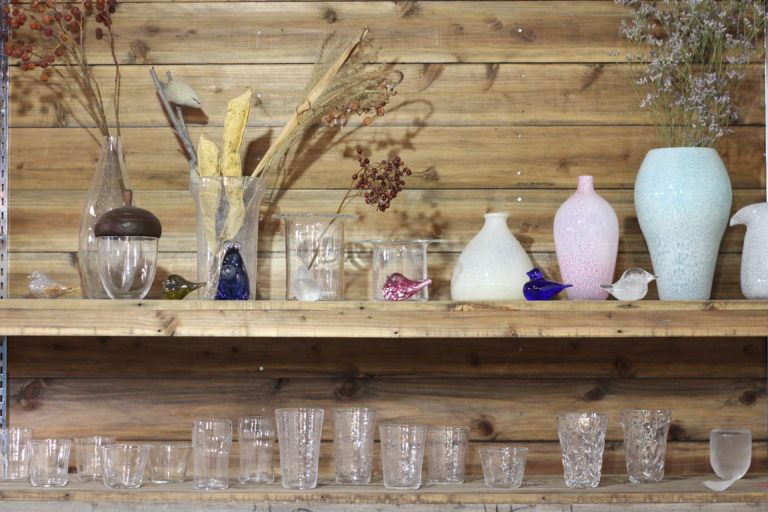
With the help of high temperatures, the world of glass is one you can shape according to your own imagination. There is a lot of freedom with glass; you can achieve almost any shape you can think of.
It might be said that the biggest charm of glass is the beauty of the colors. For a start, you can make transparent pieces – something that is not possible in ceramic art. Now, take the color white as one example. There are different types of white: transparent or opaque. With glass, you have the same number of color options as there are with paint.
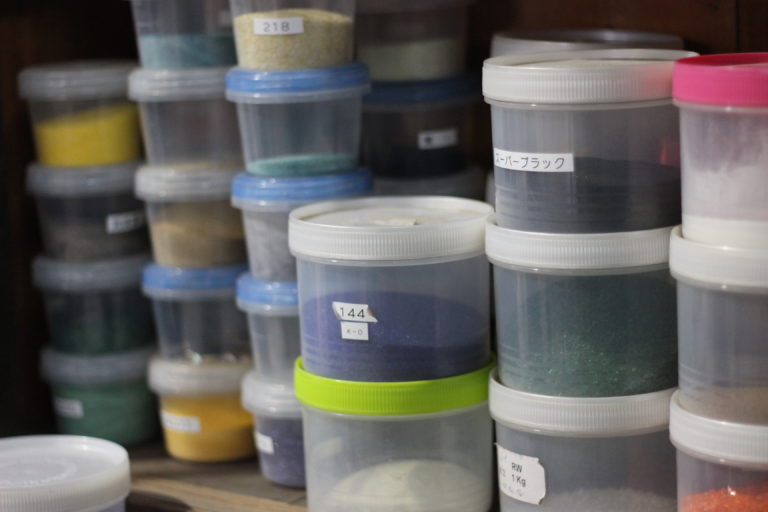
Busy times at Glass Studio Calore may see up to 50 reservations a month for the glassblowing experience they offer.
Matsumoto likes to entertain his guests with amusing conversation.
How did Matsumoto get into glass?
“After graduating high school, I started selling aluminum building materials. One day at a customer’s site, I saw someone welding and I thought, ‘That looks interesting. I want to try that.’ They let me have a go at it, and I was actually pretty good. Later, on a company trip to Hokkaido, I saw someone blowing glass and thought, ‘Oh… people do this by hand!’ I was amazed.”
Being young and “wanting to do something unique,” he found himself absorbed by glass.
Later, he quit his job and started attending a trade school in Osaka where he could learn how to make glass.
However, the focus of the curriculum was mainly on product design and there wasn’t much time dedicated to practical training.
“Once a week there was a glassblowing class; I remember that being really fun. The teacher, Takeshi Tsujino, was a famous Venetian-glass maker. He was the first person I ever thought was cool.”
Matsumoto looked up to Tsujino and thought, I want to work with this person. But, since he was still just a student, he didn’t think he had the skills necessary.
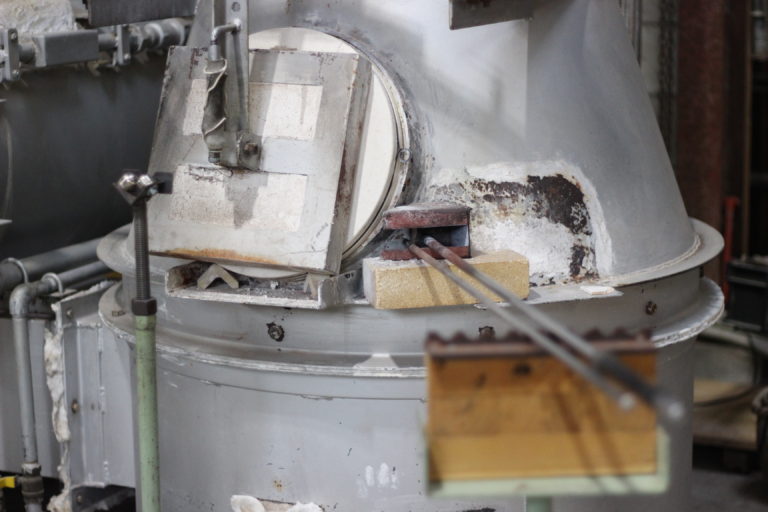
So, he quit the school he was going to and got a job at a newly opened glass studio in Hokkaido to improve his abilities. It was a hands-on education.
Just as he was starting to understand the ins-and-outs of glass making, he got some welcome news.
“I heard Tsujino was going to open a studio in Osaka. I immediately quit the studio in Hokkaido and went to ask Tsujino for a job.”
His Days with Tsujino
So, Matsumoto was now ready to work with his idol, Takeshi Tsujino. However, he was not able to start making glass right away.
“When I got to Tsujino’s new studio, he said ‘I’m making a new house.’ I thought, ‘What’s this guy talking about?’” (laughs)
Tsujino was the type who wanted to make everything himself. So, first, his employees had to build the house that would adjoin the workshop. Matsumoto helped with the project for two years, all the while thinking, “This guy is something else.”
I asked Matsumoto if he was unhappy spending two years building Tsujino’s house instead of making glass.
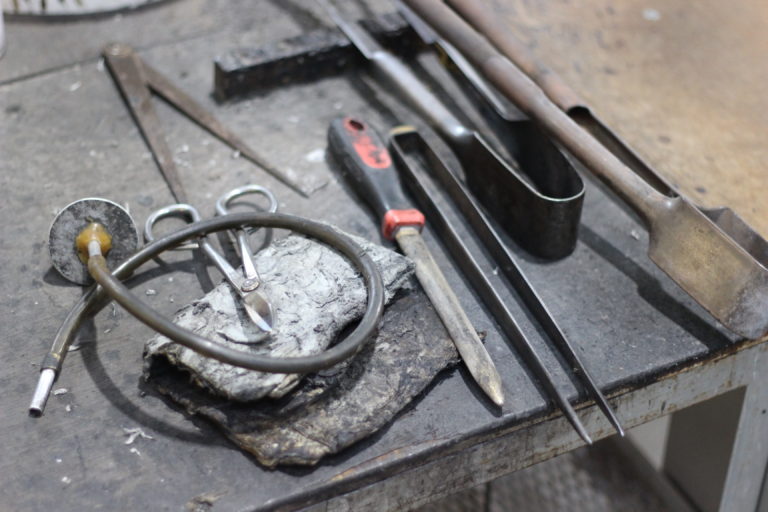
“No, it was really interesting, actually. Usually, people don’t think of building their own house from the ground up. This was before the Internet had become widespread, so we were going to the library and learning from books on home building as we went along.”
Matsumoto has used the experience he gained building Tsujino’s house to renovate the interior of his own studio, build an office, as well as make his own display shelves for his creations.
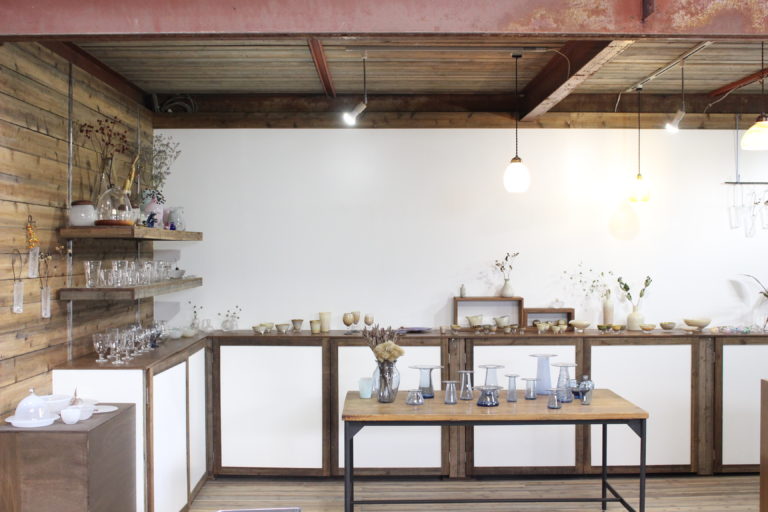
“If I hadn’t met Tsujino, I would never have learned to make things myself. My life would be a lot different.”
Tsujino has had more influence on him than anyone else in his life. Not just when it comes to glass, but from the perspective of making things in general.
Step One: Think it Through
Matsumoto learned the importance of thinking things through first from Tsujino.
“How is a house made? How do you cut the wood? You have to think about these things, and if you don’t find an answer when you research them, you should talk to someone.”
Matsumoto says you shouldn’t give up as soon as you run into something you don’t know. “First, think it over yourself; then research it; then, if you still don’t have an answer, ask someone.” According to Matsumoto, this way of doing things forms “connections between people.”
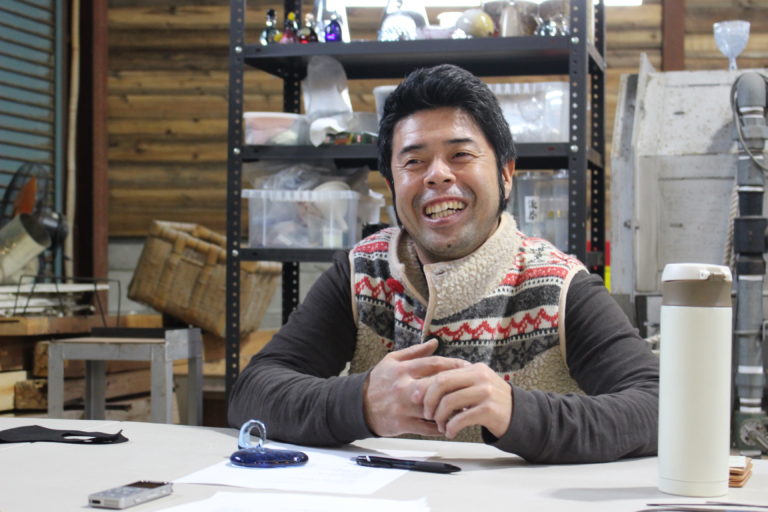
“People don’t really want to help you if you aren’t putting any effort into it yourself; but, on the other hand, people are happy to help those who are trying as hard as they can, aren’t they? I think someone will always be there to give you advice or lend a helping hand if you are doing your best.”
This philosophy of “thinking it through” also applies to glass.
“When it comes to glass, if someone says, ‘I want you to make this,’ I try not to say, ‘I can’t do that.’ As much as possible, I try to think of a way I can make it with the skills I have.”
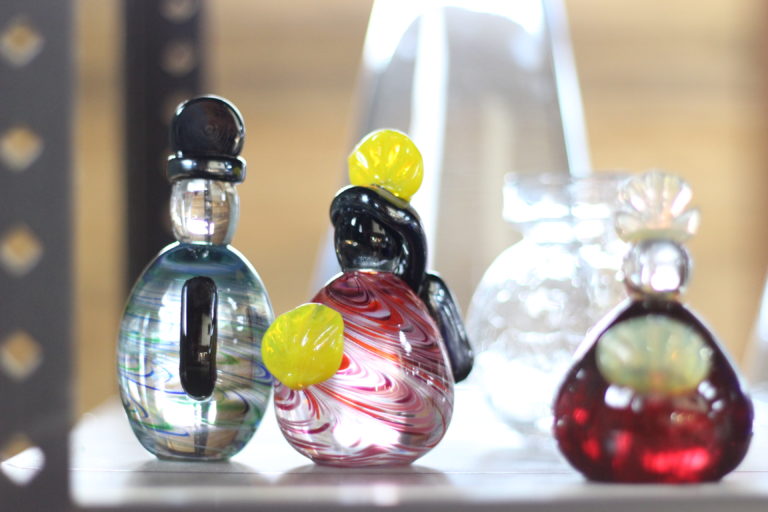
The Results of Broadcasting Your Intentions
Matsumoto worked with Tsujino for about five years. After that, he worked in Hakone and Izu in glass workshops where they offered glass making experiences to the public. When he had saved enough money, he decided it was time to open his own shop.
Wasn’t it expensive getting all the equipment you needed to start a new workshop?
“Actually, no, I was incredibly lucky there. When I decided to go out on my own, I told everyone I knew about it, and in the course of talking to people, they’d say ‘Can you use this?’ or, ‘Do you need that?’ I got a lot of equipment that way. I even inherited this melting furnace!”
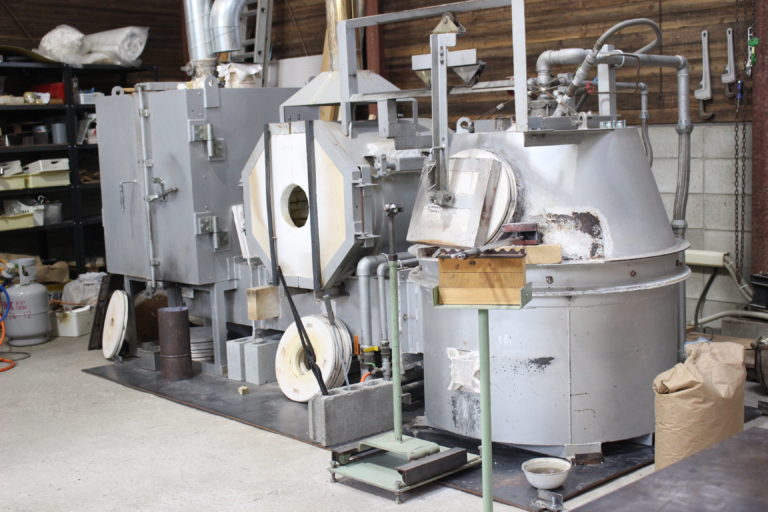
Matsumoto says he was lucky, but perhaps inspiring the goodwill of others is yet another of his many skills.
The Glassblowing Experience: Making it Together
Isn’t it difficult for Glass Studio Calore to have people constantly coming in to try glassblowing?
“Among artists, I may be a little strange on this point. I actually like offering these experiences to the public. I enjoy the feeling of making things with other people, and I feel like I have accomplished my goal when they have a good time. For me, sitting in the shop by myself and silently making the same things all day would be a slog.” (laughs)
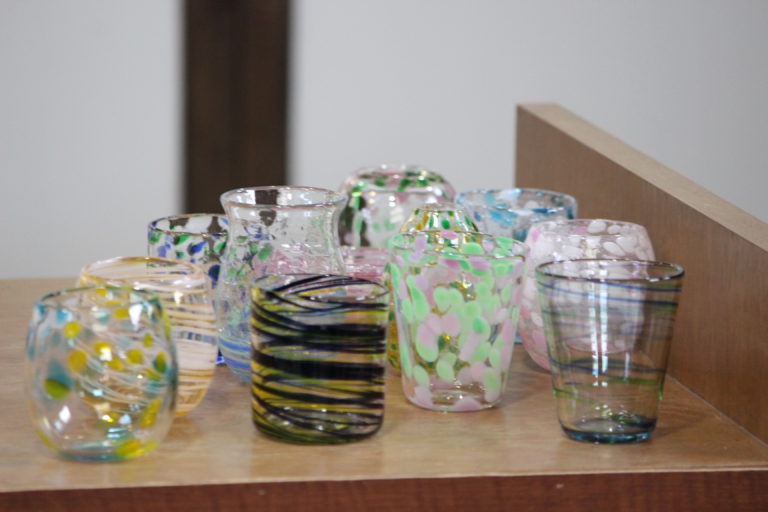
When Matsumoto takes reservations for his glassblowing experience, he likes to ask the customers about their plans before and after they come to his shop.
“Since they’re coming all the way out to Kameoka, it’d be a shame if they didn’t go anywhere else. So, I like to introduce them to other places around town. I’ll tell them this place has a nice lunch, or that shop has some handsome attendants… I like helping people coordinate their day to make their trip to Kameoka more fun.”
Matsumoto introduces his guests to other people and places around town because wants visitors to not only enjoy their glassblowing experience, but also Kameoka as a whole.
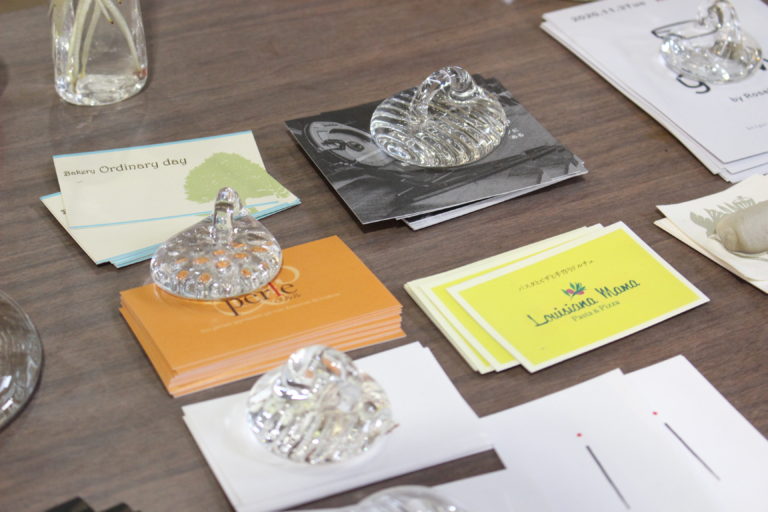
I asked Matsumoto about his hopes for the future.
“I hope my studio – and Kameoka as a whole – is able to develop a long-term, consistent popularity among travelers. More so than any products on shelves, I want the appeal of Kameoka and its people to be what visitors remember. I hope these things stand out to people and lead to sustainable success for all of us.”
As you can see, Glass Studio Calore offers a one-of-a-kind experience. Matsumoto’s easy conversation and glassblowing know-how will certainly make for an unforgettable time.
So come and give glassblowing a try! And when you do, don’t miss the chance to enjoy some of the other wonderful places Kameoka has to offer!

